So I wasn’t sure WHAT this place was supposed to represent exactly, but I do know there is a lot of real-world cultural references with their own dash of Steampunk (or whatever) thrown in.
I digress.
Here’s the first picture I’ll be analyzing:
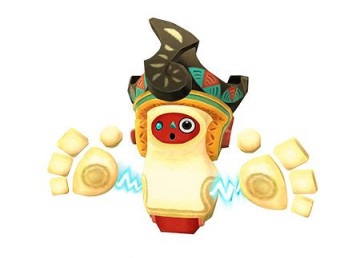
The blog “The Architecture of the Legend of Zelda” (http://architectureofzelda.tumblr.com/) wrote, “…when translating the Ancient Hylian script upon the shipyard map in a further area of this desert, the word Dogu is unearthed. Dogu are humanoid (and animal) figurines found in Japan that date largely from the country’s prehistoric Jomon Period [~10,500-300BC].”
Here is a picture:
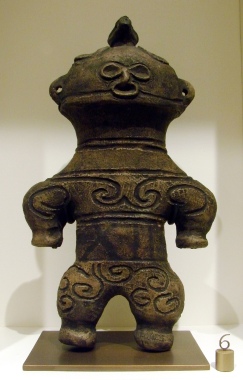
“Dogu” are clay figurines that were believed to channel healing magic. The Dogu would absorb the sickness or misfortune from the user and then destroy it.
The Lanayru robots, however, have a different twist on their design that isn’t too Japanese. The teal and orange coloring, and triangles, make me think of the Inca or Mesoamerica. In fact, Lanayru has style elements of the Americas in general–North, Meso, or South.
I found a piece of Inca art that bore a particular resemblance. Unfortunately, I couldn’t find exactly what I was looking for again, but I did find this piece of gold work:
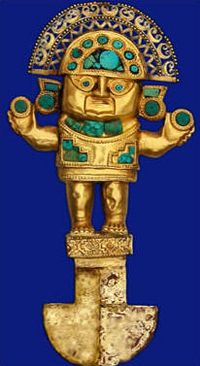
This is a Tumi found in Peru (where the Inca live), an ornamental axe used for ceremonial sacrifices. It resembles both the Dogu and the robot in its arm position and eternally surprised facial expression. It’s actually strange how similar the Tumi and the Dogu look despite being across the world from each other (although the Jomon period occurred way before Inca culture c. 1200). Unlike the Japanese counterpart to the Lanayru robot, however, we see the teal and gold elements in the Inca design.
Sorry to turn this into an archeology/anthropology blog…
On to the next comparison!
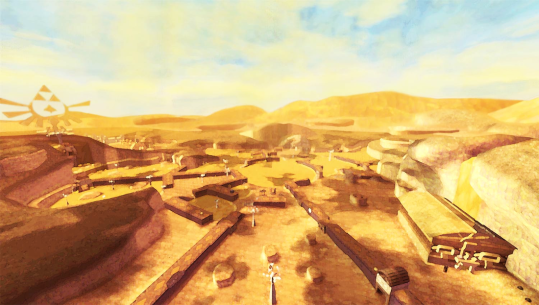
(art at http://www.creativeuncut.com/gallery-18/zss-lanayru-desert.html)
Yes, this is the present Lanayru, but it is still divided into sections this way in the past (just with much more vegetation).
Still, I thought of the Inca yet again because this picture is like a microcosm of their country. Back when their civilization was thriving, their land was divided into four regions (Tawantinsuyu) all meeting at the capital city Cusco in the middle. I thought the above picture resembled that. Nothing else to really say here…
The next analysis will just examine the color schemes and patterning. I’ll throw some pictures at you and then write down some of my thoughts.
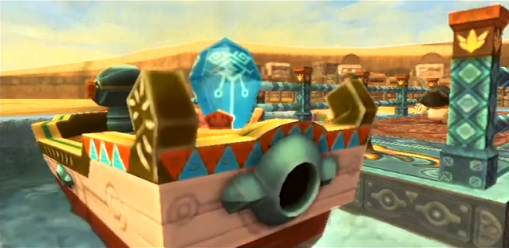
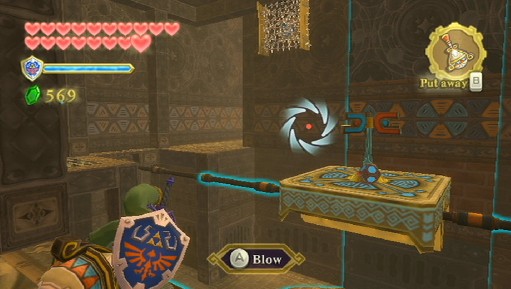
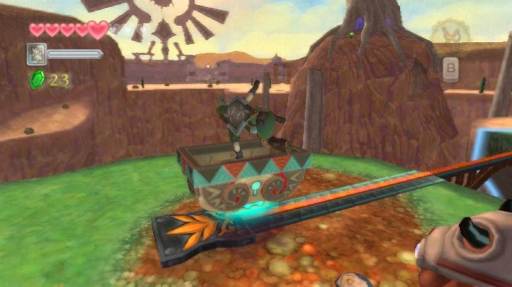
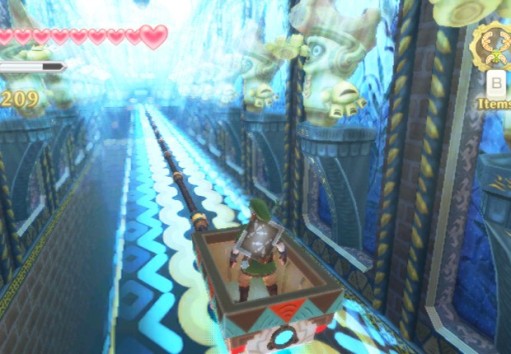
Once again, we have the presence of triangles (probably more to do with the Triforce theme than anything, but you know….) and the gold with red/orange-blue dynamic. There is also much usage of bronze, which was another common metal used by the Inca.
However, I also saw elements of Native American aesthetic. More spefically, I thought of the Nez Perce. I found this picture from the Nez Perce National Historical Park website and the resemblance is uncanny, in my opinion.
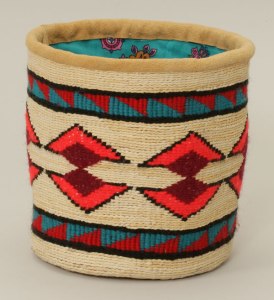
On the other hand, this Nez Perce style they commonly used in clothing is very different from what we’d see in Lanayru.
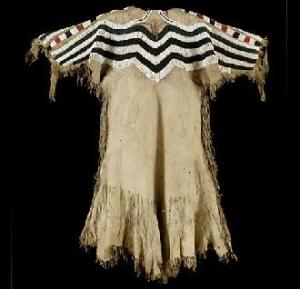
Either way, we can conclude that Lanayru’s aesthetic is a hybrid with a focus on Inca.
Hopefully, this wasn’t too brief….just a quick survey, if you will, as I type away my thoughts.
Thank you for reading!
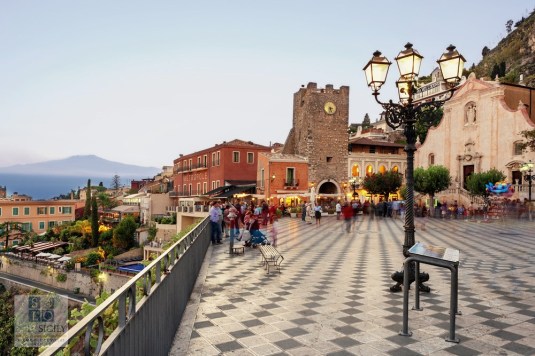
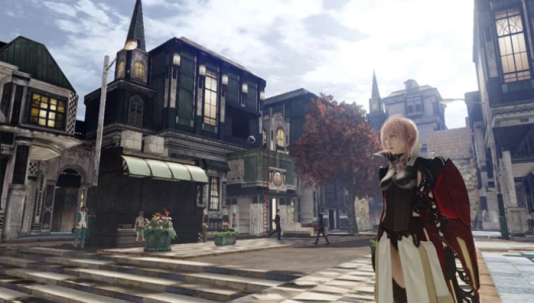
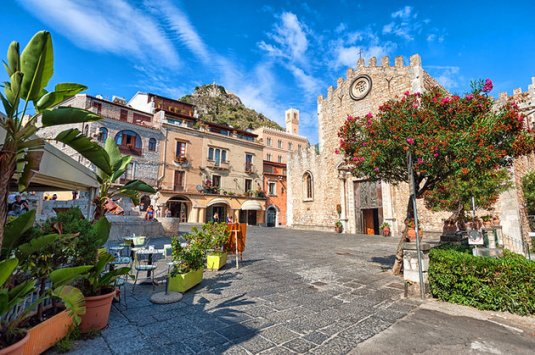
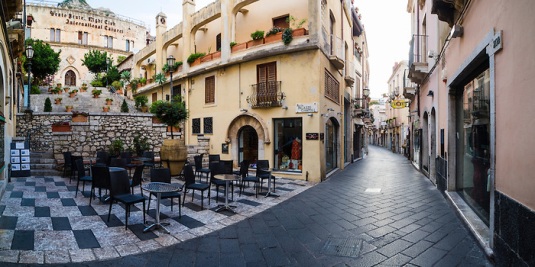
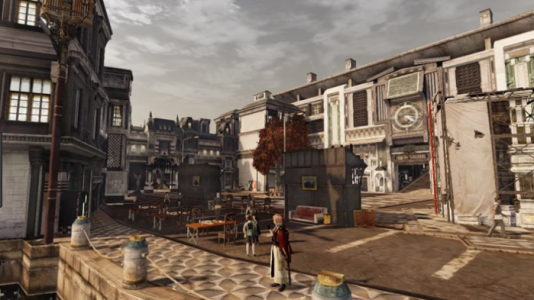
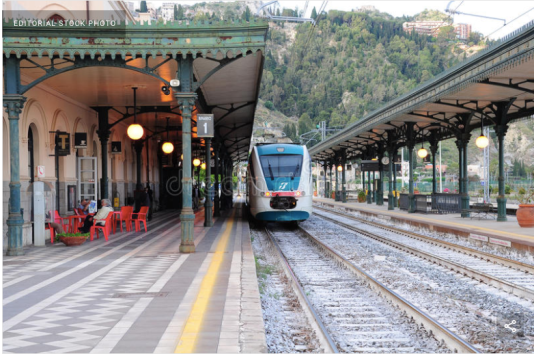
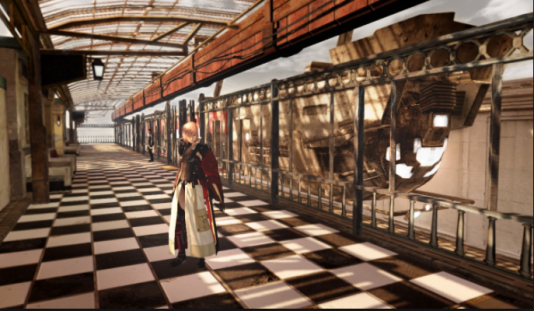
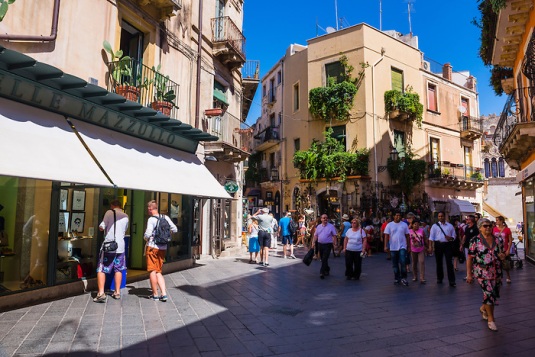










Recent Comments